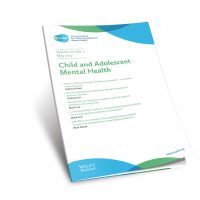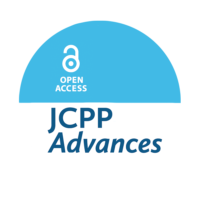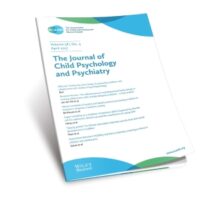Featured ACAMH Papers
-

Schools engaged in doom-monitoring students’ online interactions and content creation: an analysis of dominant media discourses
Paper from the CAMH journal 2023 Special Issue – “Growing public concern about the safety and security of schools has led many schools and school districts within the United States to hire private companies to monitor students’ online interactions and the content they create, including on social media”. Kristjan Kikerpill and Andra Siibak
Read more -

Review: Digital experiences and their impact on the lives of adolescents with pre-existing anxiety, depression, eating and nonsuicidal self-injury conditions – a systematic review
Open Access paper from the CAMH journal 2023 Special Issue – “We review publications relating to anxiety, depression, eating disorders and nonsuicidal self-injury to identify common and condition-specific digital experiences and how these may be implicated in the origins and maintenance of these mental health conditions”. Katarzyna Kostyrka-Allchorne (pic) et al.
Read more -

Using machine-learning methods to identify early-life predictors of 11-year language outcome
Open Access paper from the JCPP – “This study aims to identify a parsimonious set of preschool indicators that predict language outcomes in late childhood, using data from the population-based Early Language in Victoria Study (n = 839)”. Loretta Gasparini et al.
Read more -

Prospective prediction of developing internalizing disorders in ADHD
Open Access paper from the JCPP – “Clinical course in attention-deficit/hyperactivity disorder (ADHD) is highly heterogeneous with respect to both core symptoms and associated features and impairment”. Sarah L. Karalunas (pic) et al.
Read more -

Internet based intervention (Emotion Regulation Individual Therapy for Adolescents) as add-on to treatment as usual versus treatment as usual for non-suicidal self-injury in adolescent outpatients: The TEENS randomised feasibility trial
Open Access paper from JCPP Advances – “We assessed the feasibility of Internet based Emotion Regulation Individual Therapy for Adolescents (ERITA) in psychiatric outpatients aged 13–17 years who engaged in NSSI”. Britt Morthorst et al.
Read more -

Neural correlates of face familiarity in institutionalised children and links to attachment disordered behaviour
Open Access paper from the JCPP – “Compared to children from the community, institutionalised children showed smaller amplitudes in the N170, to both stranger and caregiver faces. Amongst the institutionalised group, living in a setting with a higher children-to-caregivers’ ratio was associated with smaller P400 amplitudes”. Paula Oliveira (pic) et al.
Read more -

Explaining the influence of non-shared environment (NSE) on symptoms of behaviour problems from preschool to adulthood: mind the missing NSE gap
Open Access paper from the JCPP – “We assessed the extent to which variance in behaviour problem symptoms during the first two decades of life can be accounted for by measured NSE effects after controlling for genetics and shared environment”. Agnieszka Gidziela et al.
Read more -

Preferential looking to eyes versus mouth in early infancy: heritability and link to concurrent and later development
In a sample of 535 5-month-old infant twins, we assessed eye (relative to mouth) preference in early infancy we investigated the contribution of genetic and environmental factors to the preference for looking at eyes, and the association with concurrent traits and follow-up measures. Charlotte Viktorsson (pic) et al
Read more -

Annual Research Review: The impact of Covid-19 on psychopathology in children and young people worldwide: systematic review of studies with pre- and within-pandemic data
Open Access paper from the JCPP – “We aimed to search for and review the evidence from epidemiological studies to answer the question: how has mental health changed in the general population of children and young people?”. Tamsin Newlove-Delgado (pic) and Abigail Russel et al.
Read more -

Brain grey and white matter structural associations with future suicidal ideation and behaviors in adolescent and young adult females with mood disorders
Open Access from JCPP Advances – “To reduce suicide in females with mood disorders, it is critical to understand brain substrates underlying their vulnerability to future suicidal ideation and behaviors (SIBs) in adolescence and young adulthood”. Lejla Colic et al.
Read more